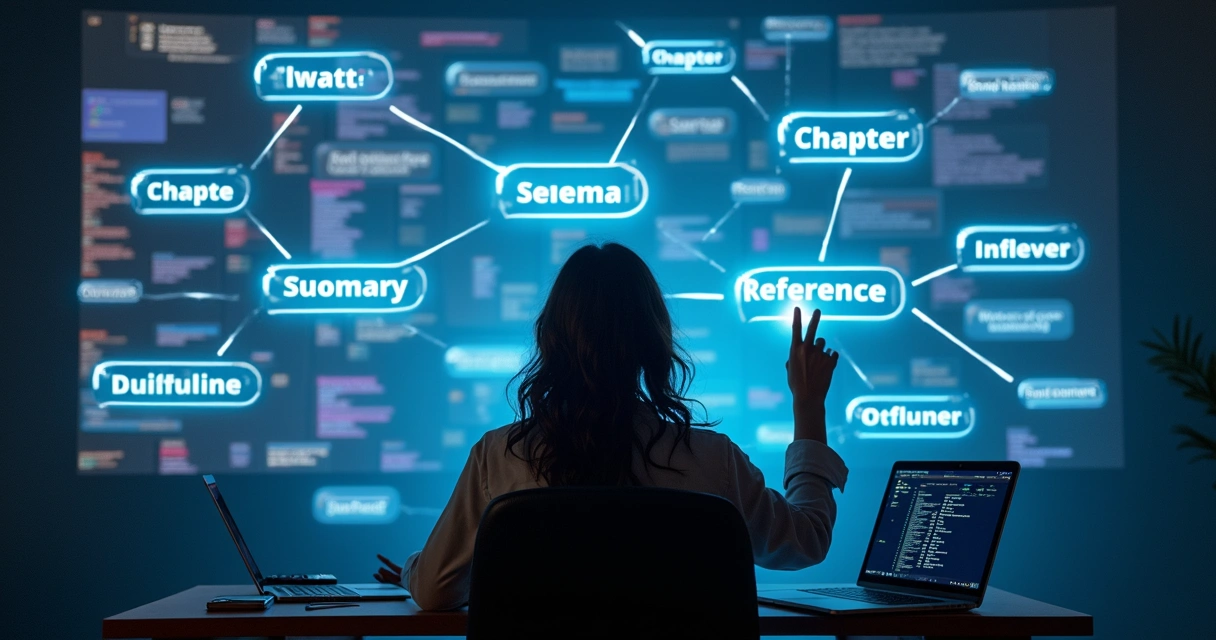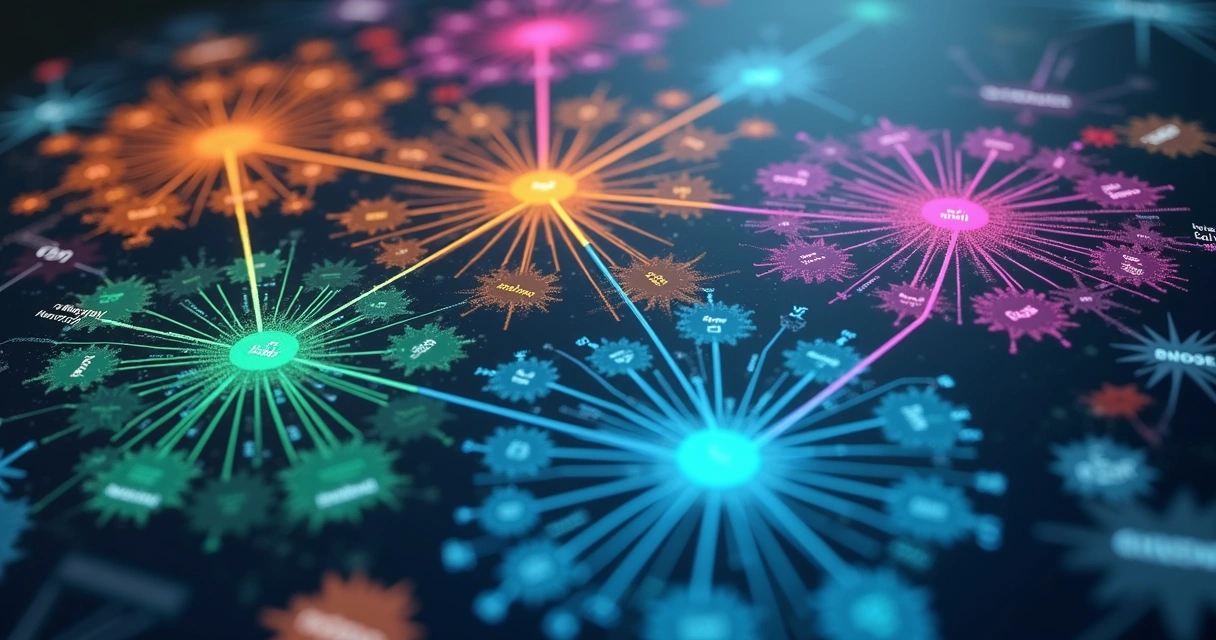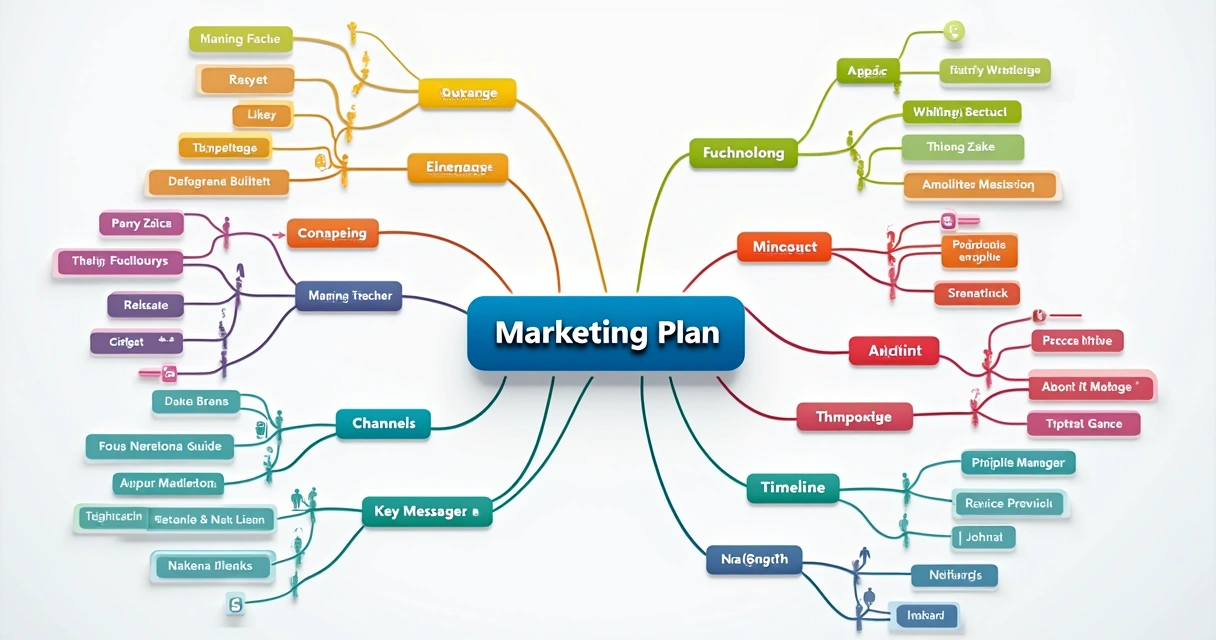
How To Organize Notes and Documents With Mind Maps
Ever opened a note or a digital file and thought: "I put work into this—why does it look like messy spaghetti in my brain?" You scroll and scroll, seeing a page of ideas squished into lists or paragraphs. Documents can store our work, but finding what matters, connecting ideas and managing study or projects? That's where things get tangled. But there's a surprisingly visual, flexible way to reorganize all this: mind mapping.
Maybe you’ve heard about mind maps, or even seen colorful diagrams on someone’s wall. Maybe they seem chaotic at a glance. Yet, they actually reflect the non-linear, web-like flow of thought better than any straight outline ever could. This is about more than doodles—it's about transformation. What if your notes, research, or project materials could start behaving more like your memory, linking, expanding, and making sense instantly?
“A map does more than show you where you are—it shows you where you can go.”
Let’s look at what it means to organize, learn, and connect with your files and notes in a whole new way. We’ll talk mind maps, artificial intelligence (AI), and how platforms like nodeland can turn those scattered thoughts into something, well, alive.
What visual organization of documents really means
When people hear “organize your documents,” most picture tidy folders, bullet lists, or maybe a tagged digital archive. All those rectangles inside rectangles—very neat, but honestly, not always helpful for actual comprehension. What about when you need to see how two sections relate? Or want to combine ideas from files in different places?
Traditional storage is linear. Open one document, read top to bottom. Move to the next. Visual organization, especially mind mapping, is different because it’s spatial and non-linear. Instead of stacking pieces, you lay them out, connect, and branch ideas onward as far as you like.
For example, let’s imagine studying climate change. In a typical file, your notes on "causes," "effects," and "solutions" exist as sequential sections or lists. Hard to flip between sections. In a mind map, "climate change" sits at the center as a node, with branches for each area—and each can explode into sub-topics, facts, or external references. Your understanding grows not from reading straight through, but by moving visually between related ideas. A mind map is a diagram used to visually organize information into a hierarchy, showing relationships among pieces of the whole.
- Connections happen instantly.
- You see gaps as well as links.
- Big ideas stay central; details spiral around.
Neuroscience backs this up—your brain works better with images and links than with lists alone.

Why linear notes can hurt comprehension (and how mind maps change the game)
It’s not that linear notes and documents are bad. They’re just, well, limiting. The page starts at the top, ends at the bottom. Our minds, though, often work in flashes, loops, associations. When you write a traditional note—to capture a meeting, summarize a textbook, brainstorm an essay—the result can feel like a shoe that almost fits, but not quite.
A mind map, instead, is built like a web. Every major point becomes a hub; sub-points, evidence, and connections branch off. You’re not forced to finish one section before you look at the next. This helps:
- Boost understanding: Seeing how points connect clarifies both detail and big picture.
- Speed up recall: When learning, you can follow branches to remember facts.
- Reduce cognitive overload: Everything isn’t squished into dense text—visual structure offloads memory work.
In fact, a study titled 'Structsum Generation for Faster Text Comprehension' found that mind maps led to a 31.9% reduction in comprehension time compared to reading normal text—not sacrificing understanding, just making recall and sense-making a lot faster.
“Seeing the links is half the battle.”
How AI brings your notes and documents to life
Most folks hit a wall: I have hundreds of scattered notes and files. Creating a mind map sounds great, but I can’t redraw everything from scratch. This is where AI and modern platforms step in.
AI can now read, analyze, and reassemble content—notes, articles, research papers, meeting recaps—into interactive mind maps. Instead of copying every main idea out by hand, you can import or type notes, and the AI sorts, summarizes, and branches the content for you. Research such as the 'NoTeeline' study showed that adding language-model assistance to note-taking reduced user time by 43.9%, while keeping accuracy. That’s huge. It means:
- You grab content from anywhere—PDFs, web, speech, hand-written notes.
- AI recognizes structure, pulls out main points, and draws an initial mind map automatically.
- You move nodes, add new links, expand summaries, and edit—all visually.
Nodeland is one example of this evolution. It uses AI to read and translate your flat files, converting them into editable, cross-linked knowledge graphs. Now each note becomes a living part of your information landscape, not a locked box lodged in a folder.

Step by step: transforming your documents with interactive mind maps
So, how do you actually do this? What does the process look like from a stack of linear files to a dynamic, navigable map? Here’s a practical sequence, using nodeland as a reference point:
1. Gather your materials
- Collect your notes, PDFs, web clippings, or text documents.
- Decide if there’s a main “project”, subject, or category you want to center—this will be the core of your first mind map.
2. Import content into your mapping platform
- Upload, paste, or sync your files into nodeland.
- The AI scans and identifies headings, lists, important sentences, and keywords.
- You can choose which areas get mapped, or let the tool auto-organize everything into nodes and branches.
3. Review and tweak the mind map
- See your initial map: main document themes as large nodes, sub-sections or paragraphs as child nodes.
- Drag nodes to reorganize, or add notes and connections if something feels missing.
- Collapse or expand branches to focus only on what you need right now.
4. Summarize, link, and expand instantly
- Use nodeland’s AI assistant to summarize long sections, create concept maps, or suggest new connections based on your content.
- Turn static data—like a meeting agenda, class notes, or research summary—into a network of linked ideas.
- Attach additional info (links, images, external citations) to any node.
5. Access anywhere, edit anytime
- Your maps live in the cloud, so you can open and edit from a phone, tablet, or laptop—no device lock-in.
- Collaboration is also possible: share with classmates, team members, or anyone who needs access, letting everyone add branches, comments, or summaries.
“You build as you go—there’s no ‘final draft’ until you decide.”

Connecting and expanding ideas: beyond static documents
Once you break away from rigid folders and flat files, everything starts to connect. Say you have research across different classes, or scattered notes from past projects. In nodeland, each map isn’t an island—nodes can link across topics, merging as needed. For example, a “communication” node from a business class might connect to a “team meeting” node from a group project, surfacing all related notes together.
- Links are visible: No more forgotten references, hidden two pages deep in an outline.
- Context is instant: You see why a link exists at a glance—no more opening a document and searching for relevance.
- Expansion is smooth: Add-supported, branching, searchable—much better than scanning folders for ages.
This approach echoes the 'Graphologue' study, which introduced tools that convert text into interactive graphs for easier exploration and understanding. In nodeland, the visual structure isn’t just decoration—it’s the backbone of your knowledge environment.
“Every document is now a living conversation.”

Real world: how mind maps help in study, work, and planning
It’s easy to think all this sounds a little abstract. So, what does it look like in action?
In study settings
- Class notes: Create a master map for a course, branching by weeks, topics, or key readings. Drag and drop lecture summaries, add test dates, and link to readings instantly.
- Summarizing books or articles: Import content and let AI break down the text into chapter or section summaries, organizing key points into branches for fast review.
- Exam prep: Collapse to see only what matters; expand for deeper details on any confusing branch.
Research confirms that interactive visuals make a measurable difference. A recent study on interactive tutoring tools found improved learning, accuracy, and even engagement when information was presented in visual, interactive formats such as mind maps.
In project management and workflows
- Task coordination: Turn a meeting agenda or project file into a branching breakdown of assignments, deadlines, and dependencies.
- Track changes and additions: Edit, comment, or mark status directly within nodes so everyone can see progress or hurdles.
- Onboarding or brainstorming: Use maps to collect stray ideas and see where they fit—sometimes side branches become future innovations.
In everyday learning or productivity
- Personal reading: Highlight interesting facts or ideas, then instantly map their connections to existing knowledge.
- Language learning: Map vocabulary by topic, connect grammar notes, and build up a visual model of usage patterns.
- Life planning: Visualize goals, sub-goals, action steps, and resources—all in one expanding space, with the flexibility to update as your plans grow.
Visual examples: how a knowledge map looks (and feels)
Sometimes, you need to see what all this change feels like. Here’s a basic, spoken example versus mind map:
Traditional notes: “Marketing plan. Audience, channels, budget, timeline, key messages.”
Mind map view: “Marketing plan” at center. “Audience” branching off left, “channels” branching off down, “budget”—top right, each sprouting sub-branches with specifics or files linked. Need to focus? Collapse all but “budget.” Want to shift? Drag “channels” to connect with “timeline.” Loop in campaign ideas with a simple link.
Visually, in nodeland, these connections look like glowing lines, inviting you to follow them. Instead of hunting for details buried in a paragraph, you jump to what you need, reorient in seconds, and see the shape of the whole project—for real.

From static to living knowledge: what changes when you map your documents?
So, what’s different when you start living in mind maps instead of plain files?
- You remember more, faster: Because ideas are visual and linked, recall and comprehension come naturally.
- You spot connections and holes: Gaps in argument, missing sources, or new possibilities stand out in the map’s structure.
- Every update ripples: Edit a note in one map and linked maps reflect the change instantly. No more outdated versions in a maze of folders.
- Collaboration is visual: Teams and classmates actually see how their parts fit—shifting, growing, and responding to each change, together.
- Learning becomes playful: Exploring and manipulating a mind map is simply more interesting than scrolling a static file. It invites curiosity.
It isn’t about throwing away all linear notes or documents. It’s about unlocking their real power—turning what you’ve captured into a compass, not a filing cabinet. With platforms like nodeland, and AI’s help, this isn’t just theory; it’s possible, starting right now.
Conclusion: your next move towards connected knowledge
You’ve probably read, written, and organized more notes and files than you can count. Maybe you’re happy with what you have. Maybe not. If you ever wish your information felt more like a living network and less like a pile, mind mapping is the shift you might need. Visual organization mirrors how we actually think—jumps, loops, clusters. AI, as with nodeland, now gives you the power to rebuild your notes and files into something flexible, interactive, and always growing.
“Turn what you know into what you can see—and what you can build on.”
If you’re ready to move away from static lists, try turning one document or old note into a mind map today. Give it a branch, a link, a new connection. You’ll see quickly: something clicks.
Curious about nodeland or want to watch your knowledge come alive? Take a step. Try out a visual map today and see how far your documents can actually go.
Frequently asked questions
What is a mind map for documents?
A mind map for documents is a visual diagram that organizes the contents and ideas from documents into a central topic with branches for main points, sub-points, and connections. Instead of listing information line by line, mind maps place information spatially, letting different topics link and expand naturally. This format highlights connections, makes review easier, and often reveals gaps or relationships missed in traditional outlines. Mind maps help transform passive storage into active knowledge, making complex material easier to navigate.
How can I organize documents with mind maps?
Start by gathering your files or notes around a chosen project or subject. Use a mind mapping tool (like nodeland) to import or copy in your content. Platforms with AI can automatically break down the text into hierarchical branches, summarizing sections and labeling key topics. Drag and drop to rearrange branches, link related nodes, and add extra notes or resources as you review. Mind maps let you connect multiple documents, cross-link information, and interactively update your map as new material arrives. This makes finding, recalling, and expanding your knowledge much faster than old-fashioned folders and lists.
What are the best apps for mind mapping documents?
There are various options for mind mapping, but it’s wise to pick a platform that lets you import, summarize, and connect notes visually. nodeland, for example, uses AI to automatically convert your notes or documents into editable, interactive mind maps, with features for summarization, cross-device access, and collaboration. Focus on tools that allow easy editing, linking, and cloud synchronization for a seamless knowledge experience. Avoid sticking to apps that simply recreate static outlines—choose ones where your content grows and connects.
Is it worth using mind maps for note organization?
Yes, for most people and scenarios, mind maps make a big difference. Research shows visual formats can cut comprehension time by nearly a third, while AI-powered organization cuts manual effort and improves accuracy. Mind maps not only keep you organized, but also surface critical links between concepts, highlight missing info, and invite deeper engagement. Especially for study, project coordination, or creative work, the flexibility and clarity of mind maps is very valuable.
Can mind maps help find documents faster?
Absolutely. Because mind maps lay out your content visually, you can see relationships and pathways between topics at a glance. Need a reference from a previous meeting? Find the linked node and follow its connection. Need to revisit an old summary? Collapse or expand the tree. Mind maps reduce the time lost searching through folders or linear lists. With tools like nodeland, you can even jump between maps instantly, making retrieval and navigation a lot smoother than traditional document management.